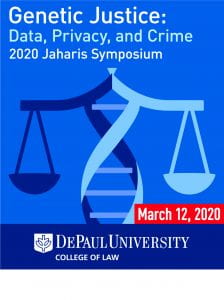Health law practitioners have specialized training and knowledge that should be utilized to take on health challenges facing our communities. We also have a moral and ethical duty to advocate for change where we see evidence of systemic inequities, and we are currently in a moment where these skills can effect important and lasting change.
As we learn more about COVID-19 from scientists, public health experts, and medical practitioners, we are getting a clearer picture of which individuals and groups are most at risk from the virus. However, along with these identified risk factors, there is growing evidence of racial health disparities associated with the disease. Specifically, African Americans are contracting COVID-19 at higher rates than other racial groups, and are more likely to die from the disease than their non-African American counterparts. Here in Chicago, 72 percent of the city’s COVID-19 deaths have been Black Chicagoans, even though only 30 percent of the city’s population is Black. And there are similar patterns in the data from other cities and states.
The explanation for why communities of color are disproportionately affected by COVID-19 could be the same reason that we see other health disparities in those communities. The Social Determinants of Health (SDH) are the conditions in which people are born, grow, work, live, and age, and the wider set of forces and systems shaping the conditions of daily life. And according to the World Health Organization’s definition, these forces and systems include culture and history that make up social norms, economic policies, and political systems. The history of this country, with its legacy of slavery, segregation and discrimination, influences the structures and systems in place that affect population health.
Communities of color are doubly vulnerable to this particular disease, as they have higher infection exposure risks, as well as systemic and institutional risks that increase mortality. A recent report by the Chicago Urban League explains how longstanding elements of structural racism contribute to increasing these vulnerabilities as a higher proportion of people of color work in low-paying service jobs deemed essential. For example, about one-third of all Americans have the types of jobs that allow them to work from home, compared to less than one-fifth of Black Americans with those types of jobs. Communities of color are also frequently located in areas with poor air and water quality. These environmental hazards leave residents more vulnerable to chronic and acute respiratory and cardiac illness.
Academics and professionals engaged in the health care field have a key role in addressing systemic disparities through community engagement, for data collection, information sharing, and confronting root causes of negative social determinants of health. This advocacy can only be successful where we partner with communities of color, as there can be “nothing about us without us.” Those partnerships should extend not only to gathering and sharing data, but also to informing research and policy. Building trusting and genuine partnerships is not easy, and takes a lot of sustained effort, but achieving health equity requires centering and amplifying the voices of those with lived experience. Community members and leaders are subject matter experts, and have crucial insights into what interventions are necessary and can succeed.
Some ideas from UIC’s School of Public Health for immediate action include sharing factual information and data that have been vetted by reliable sources, acknowledging and responding to widespread mistrust and misinformation, remaining connected to community partners, and supporting legal and policy responses that address social determinants—both those that are root causes as well as immediate needs.
For example, mass incarceration and detention are potentially responsible for increased spread of infection, as jails, prisons, and detention facilities have a steady stream of people into and out of the facilities, and are often overcrowded, making it impossible for residents to maintain social distance and good hygiene practices. Black and Latinx community members are incarcerated and detained at a much higher rate than other sectors of the population. Decarceration efforts by organizations like Uptown People’s Law Center here in Chicago use both a civil rights and a health equity lens to push for reforms that address root causes, as well as urgent immediate needs.
Using a health equity lens to advocate for changes in employment, housing, and public benefits policy is well within the wheelhouse of health law professionals, but why should we take on this role?
The preamble to the model rules of professional conduct urges attorneys in their roles as public citizens to “seek improvement of the law, access to the legal system, and the administration of justice.” A lawyer should “cultivate knowledge of the law beyond its use for clients, and employ that knowledge to reform the law” where inequities are observed. Our role in society and our moral obligations as lawyers also moves us to act in the public interest, particularly those of us who have experience and practice in the health law space to champion these types of reforms. Finally, as members of the DePaul University community, we have the responsibility to further the mission of this institution—to apply our “specialized expertise in ways that contribute to the societal, economic, cultural and ethical quality of life in the metropolitan area and beyond.”

